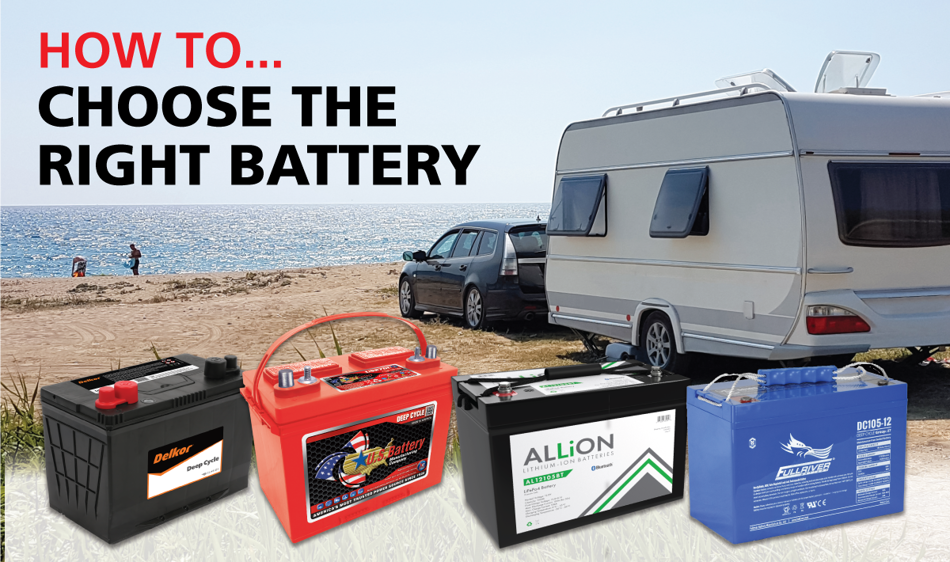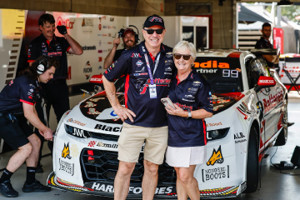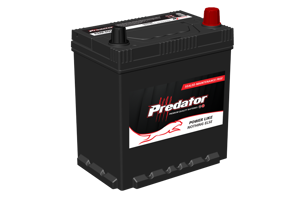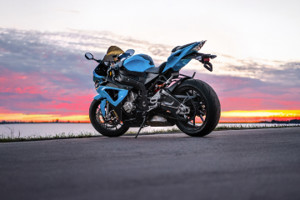Choosing the Right Deep Cycle Battery
Most of us tend to over research everything online before we purchase a product and if you are like me, you can get buried in confusing and sometimes conflicting information. Batteries are no different and the information can vary a little or a lot depending on the manufacturer, distributor, or reseller. The following basic tips should help you select the right battery for your caravan, RV or camping application.

FIRSTLY, AND MOST IMPORTANTLY IS SAFETY
Choose a quality battery that has the least hazards for your application. For example, if you are installing batteries in your caravan, campervan or RV and the batteries will be located internally (under a bed or in a compartment), you should only choose a fully sealed and pressure valve protected battery.
Options include, VRLA “Valve Regulated Lead Acid” (AGM or GEL) or a quality Lithium Ion (LifePO4) with high quality PCB or BMS protection features required to protect you, your family and your equipment. Never install wet / flooded batteries internally as they can and will ‘Gas’ during charge and discharge and can possibly leak highly corrosive electrolyte if overfilled or overcharged. Wet / flooded batteries should only be installed in external bays, boxes and be well ventilated.
WHICH BRAND?
Next, choose a quality known brand from a reputable importer, distributor or reseller. Cheaper online pricing sounds great but can also come with risks. If the battery fails, will the seller still be there to cover warranty or repairs to your equipment? Will the online seller provide the best technical advice or support?
FINALLY, CHOOSE FROM THE 3 CATEGORIES:
- Starting / Cranking
- Dual purpose
- Deep cycle
Starting or Cranking batteries should only be used for engine starting / cranking and should never be used in a cyclic application because the plates are too thin and the battery will fail in a very short time if cycled repetitively. Starting / cranking batteries are measured in CCA or CA (Cranking Amps).
Dual purpose batteries have slightly thicker plates and provide starting / cranking and limited cyclic capabilities where the loads are limited to small or medium current / load applications. Dual purpose batteries are usually measured in both CCA and Ah (Amp Hours).
Cyclic batteries have less plates than cranking batteries. However, they have thicker plates and can handle medium to high current / load applications over longer periods. The thicker plates are not normally good for Starting or Cranking applications as they provide a lot of less surface area. Deep cycle batteries are measured in Ah.
Lithium batteries (LifePO4) Lithium Ion Phosphate batteries are mostly designed for cyclic applications and should never be used for starting / cranking. A good quality Lithium (LifePO4) battery will have over current protections and the PCB or BMS will protect the battery against damage caused by cranking current, overheating, short circuit and more.
There are many other things to consider when choosing the right battery. What capacity do you require to run your appliances / loads? Does your battery charger or charging system suit the battery type you choose? Will the battery be used constantly or stored for extended periods of time? Will the battery be used in hot or cold climates?
Written By: Mark Ray



